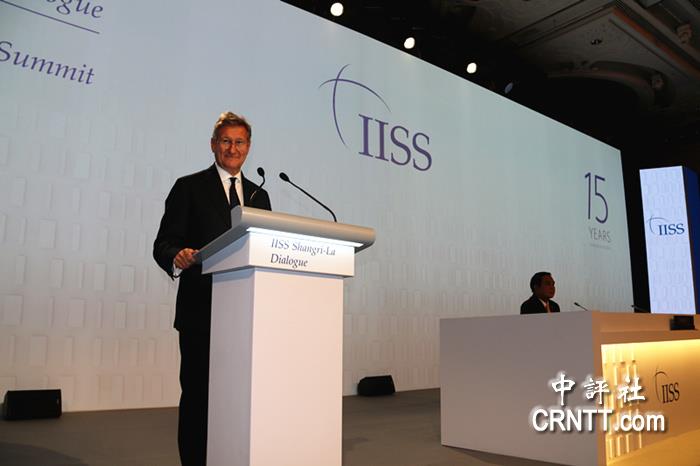
|
| IISS負責奇普曼主持開幕式。(中評社 楊犇堯攝) |
13. We need to find a suitable equilibrium as soon as possible in order to address existing problems, or else those of us who have a direct duty to maintain security will have failed. In our quest for a new equilibrium, we need to have common goals for regional and global security as well as global security. I believe that there are 4 such goals: one, Secure Peace; two, Sustainable Growth; three, Shared Prosperity; and four, Preserving the Planet.
14. We need to establish common ground in order to reach our common goals. So we must find areas of collaboration, putting our differences aside as much as we can. Every country should make a paradigm shift, from confrontation to collaboration under the concept of becoming “Stronger Together.” Most importantly, we must leave no one behind. We must move from conflict to coherence and harmony, from common interest to shared values, and from a zero-sum attitude to a positive sum attitude.
15. I like to think of this new paradigm as being built on a foundation of the “3 M’s”, namely, Mutual Trust, Mutual Respect and Mutual Benefit.
(IV) Guidelines for Regional Cooperation: A New Equilibrium that Supports Each Other and Leaves No One Behind
16. I believe that ensuring balance and building sustainable security in the region depends on a conducive environment. In my view, there are 7 important features of such an environment as follows:
17. First, promoting trust and confidence between countries in the region, which requires time and the cultivation of familiarity. Countries should, therefore, continue to work together, in line with the culture of “giving” in Asia, meaning the more you give, the more you receive in return. Therefore, the more trust and confidence we have in each other, the more security we will receive in return.
18. Second, creating equitable and supportive partnerships through regional groupings or trilateral partnerships. Partnerships can be formed between countries with intermediate levels of development; or between countries with high levels of development and those with lower levels of development; or with major powers providing support to countries with varying levels of development on the basis of each country’s capabilities so as to bridge gaps and disparities in all areas.
19. Third, avoiding the trap of having to choose sides or engaging in partisan divides. Today’s world is multipolar. Small and middle powers must seek friendly engagement with other countries around them and join together in order to build a suitable equilibrium. After all, no country wishes to be forced to choose sides. We hope for the continued goodwill and understanding of all our friends.
|